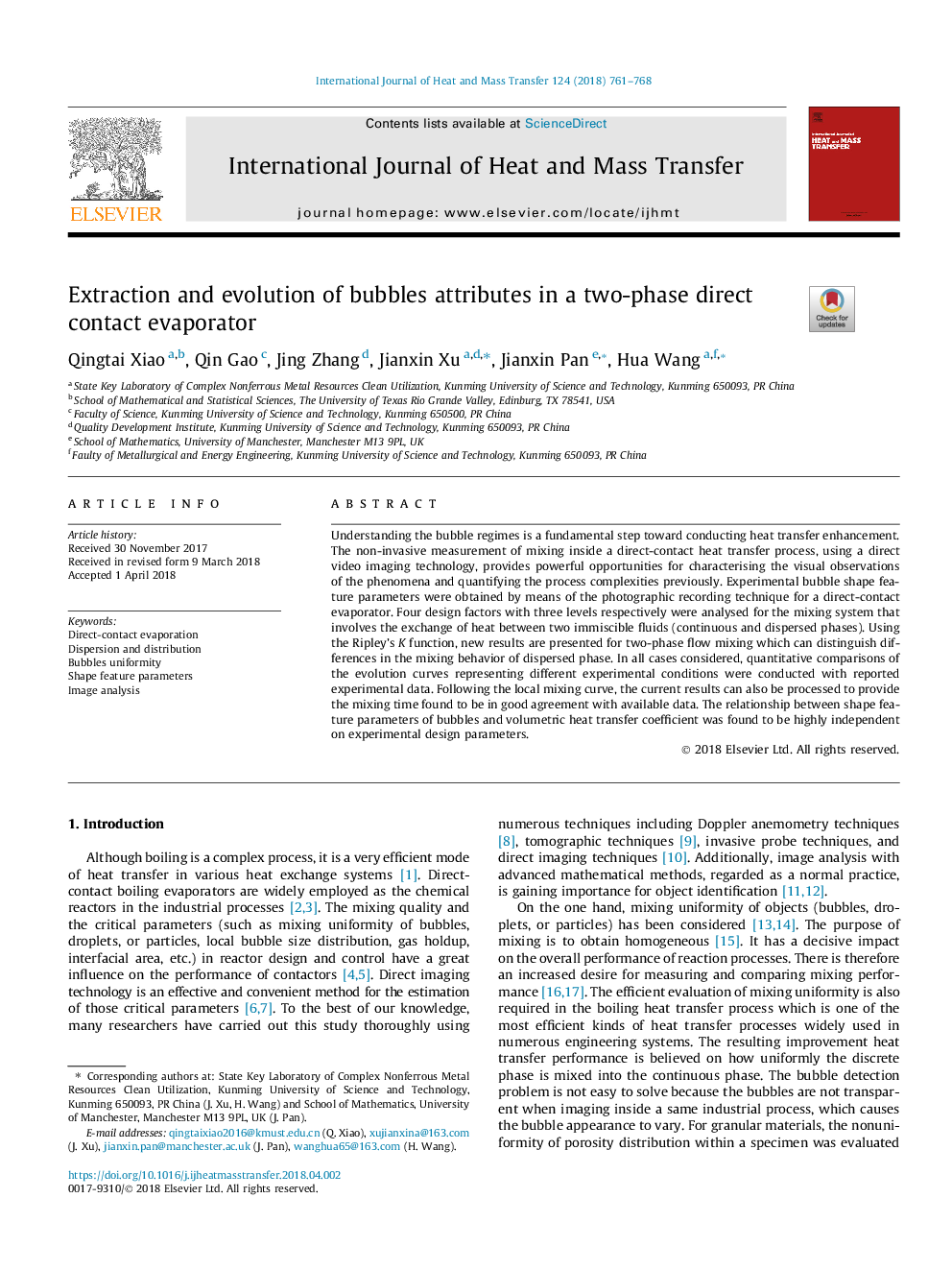| Article ID | Journal | Published Year | Pages | File Type |
|---|---|---|---|---|
| 7054233 | International Journal of Heat and Mass Transfer | 2018 | 8 Pages |
Abstract
Understanding the bubble regimes is a fundamental step toward conducting heat transfer enhancement. The non-invasive measurement of mixing inside a direct-contact heat transfer process, using a direct video imaging technology, provides powerful opportunities for characterising the visual observations of the phenomena and quantifying the process complexities previously. Experimental bubble shape feature parameters were obtained by means of the photographic recording technique for a direct-contact evaporator. Four design factors with three levels respectively were analysed for the mixing system that involves the exchange of heat between two immiscible fluids (continuous and dispersed phases). Using the Ripley's K function, new results are presented for two-phase flow mixing which can distinguish differences in the mixing behavior of dispersed phase. In all cases considered, quantitative comparisons of the evolution curves representing different experimental conditions were conducted with reported experimental data. Following the local mixing curve, the current results can also be processed to provide the mixing time found to be in good agreement with available data. The relationship between shape feature parameters of bubbles and volumetric heat transfer coefficient was found to be highly independent on experimental design parameters.
Related Topics
Physical Sciences and Engineering
Chemical Engineering
Fluid Flow and Transfer Processes
Authors
Qingtai Xiao, Qin Gao, Jing Zhang, Jianxin Xu, Jianxin Pan, Hua Wang,
